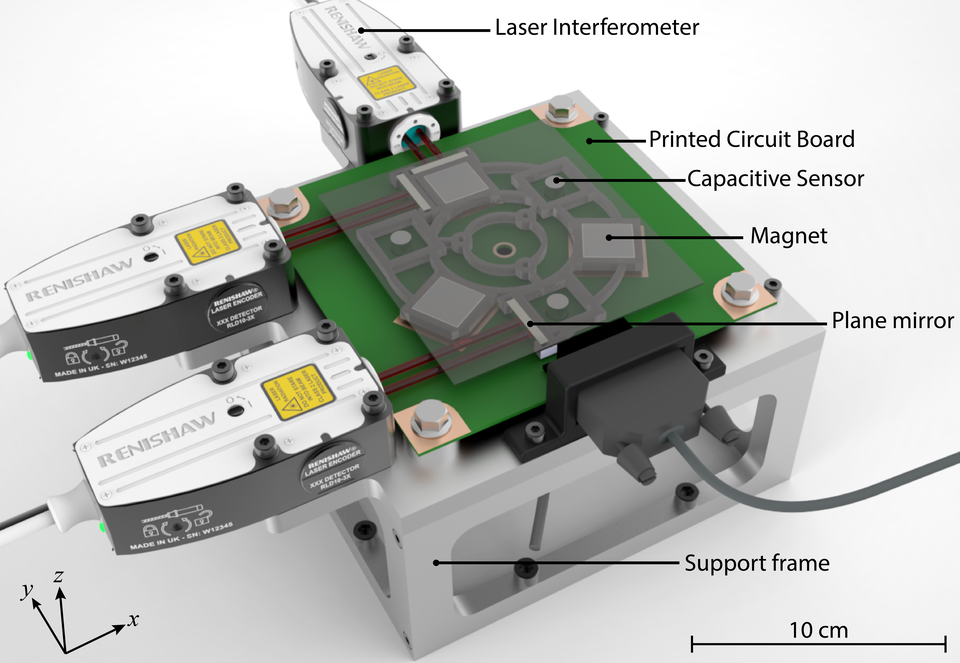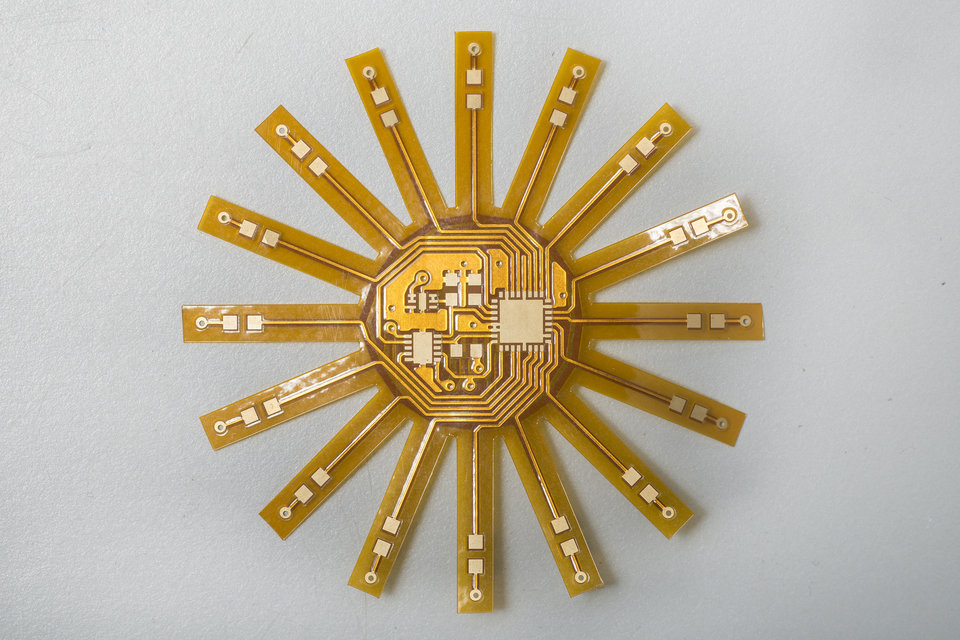Precision Positioning
The first core research area, the study of positioning systems, is aimed at high speed and high accuracy systems and guidings. This is a continuation of the research that has been performed by this section in the past, and it fits perfectly with current developments in the high-tech industry. Its goal is to produce alternatives for existing architectures which may prove to be advantageous in future developments with respect to cost and precision.
This research area also offers the opportunity to attune the education of our MSc and PhD students to a further career in this industry. One of the topics within this area is the research of the active magnetic bearing supported spindle used in the mastering of optical data-carriers like the CD, DVD and Blu-ray.
Also, we are developing a high speed arm for a pick-and-place machine, and we are studying the support and traction of spindles with an extreme high angular velocity of 300.000 revolutions per minute.
A very important recent contribution to this research area is the MicroNed funded Microfactory project. This project is based on the needs to produce parts in the micrometre range with materials other than silicon that can not be manufactured with lithographic processes. Also the handling of parts with extremely small sizes is a real challenge. Van der Waals forces and even Casimir forces can play a role when assembling MST parts so a new approach is needed in positioning and driving these production systems. In this project we are studying the support and traction of spindles with an extreme high angular velocity of 300.000 revolutions per minute and a master slave haptics system for micro assembly.
Recently new research has been initiated into the high precision transport and positioning of large glass substrates, as used in flat screen or LCD manufacturing.
Of course, we will also continue our research into the development of new architectures for high precision stages. Think of planar drives with integrated metrology.


